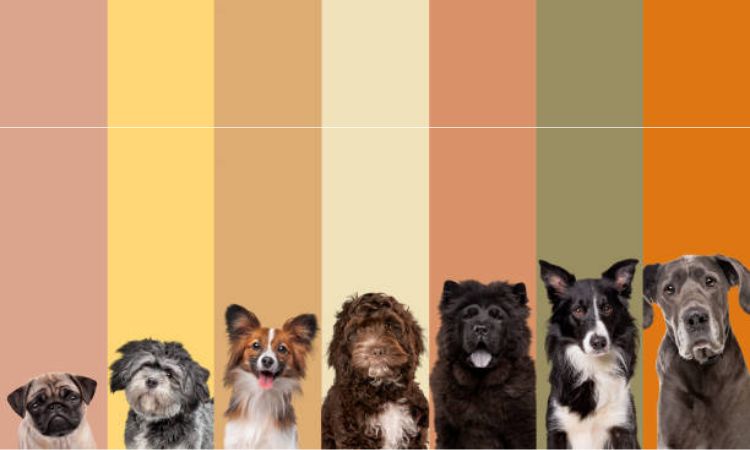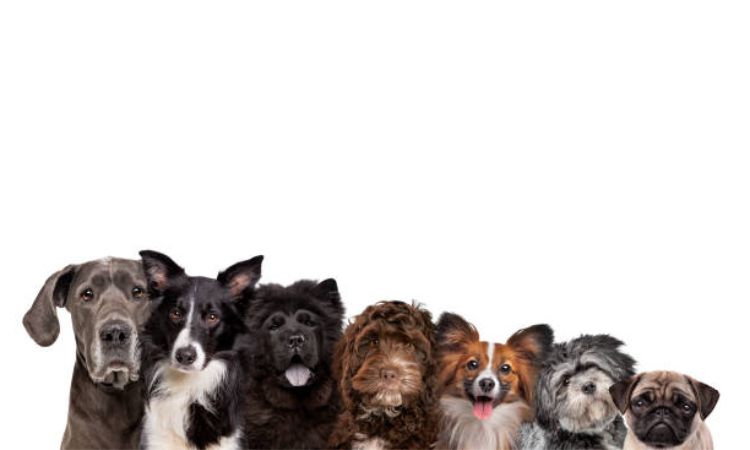If you want a dog that brings joy without leaving a trail of fur everywhere, you’ve come to the right place. Nexus Pets has put together a guide to the best low-shedding dog breeds—perfect for keeping your home clean while enjoying all the love and loyalty a dog has to offer. Say goodbye to constant vacuuming and hello to a more comfortable, fur-free living space!

What Does Low-Shedding Mean?
Shedding is a natural process where dogs lose old hair to make way for new growth. Low-shedding dogs lose less hair compared to other breeds, resulting in less fur around the home. However, no dog is completely non-shedding — even low-shedding breeds still produce some dander and shed minimal hair. Coat type influences shedding; curly or wiry coats tend to trap loose hair, while double coats shed more, especially seasonally. Choosing a low-shedding breed can help reduce cleaning and allergy issues.
Top Low-Shedding Dog Breeds for a Cleaner Home
1. Small Breeds
- Poodle (Toy, Miniature, Standard): Poodles have a signature curly coat that effectively traps shedding hair, making them ideal for allergy sufferers. However, their coats require regular grooming and brushing to prevent tangles and mats, keeping them looking their best.
- Bichon Frise: With a dense, curly coat, Bichon Frises shed very little. They need daily brushing and occasional professional grooming to maintain their fluffy appearance and avoid matting.
- Maltese: Known for their silky single-layer coat, Maltese dogs shed minimally. Daily brushing is essential to keep their coats smooth and free from tangles.
- Yorkshire Terrier: Yorkies are low shedders whose coats require consistent grooming to stay neat and prevent loose hair around the home.
- Shih Tzu: Although they shed very little, Shih Tzus demand high-maintenance grooming to keep their long coats free of tangles and mats.
- Chinese Crested: This breed comes in two varieties—hairless and powderpuff. Both shed minimally, but hairless types need extra skin care to stay healthy.
2. Medium Breeds
- Standard Schnauzer: Sporting a wiry double coat, Standard Schnauzers shed sparingly. Regular grooming is necessary to keep their coats healthy and to remove any loose hair.
- Spanish Water Dog: With a curly, woolly coat, these dogs shed very little but require special grooming to prevent matting and keep their fur manageable.
- Cockapoo: A cross between a Cocker Spaniel and a Poodle, Cockapoos inherit low-shedding coats and are known for being easy to care for.
- Irish Water Spaniel: These dogs have tightly curled, water-resistant coats that shed minimally. They need routine grooming to maintain coat health.
- Barbet: Similar to other water dogs, Barbets have curly coats that shed very little and require regular grooming to stay clean and tangle-free.
3. Large Breeds
- Labradoodle: A popular mix of Labrador Retriever and Poodle, Labradoodles combine low-shedding, hypoallergenic coats with friendly, intelligent personalities, making them great family pets.
- Portuguese Water Dog: This breed’s curly, hypoallergenic coat sheds minimally but needs consistent grooming to avoid tangles and mats.
- Afghan Hound: Despite their long, flowing coats, Afghan Hounds are considered low shedders if groomed properly and regularly to prevent tangles.
- Komondor: Famous for their corded coats, Komondors hardly shed, but their unique fur requires dedicated grooming to keep it clean and healthy.
- Lagotto Romagnolo: Known for their dense, curly coats, Lagotto Romagnolos shed very little and make excellent companions for those wanting a larger dog without the mess of shedding.

Grooming Tips for Maintaining a Low-Shedding Coat
Consistent grooming is key to keeping a low-shedding coat healthy and manageable. Regular brushing helps remove loose hair before it falls out naturally, preventing mats and tangles that can trap shed fur. Depending on the breed, brushing frequency varies: breeds like Poodles and Bichon Frises benefit from daily brushing, while others such as Portuguese Water Dogs or Labradoodles may require brushing several times a week.
Professional grooming every 6 to 8 weeks complements at-home care by thoroughly cleaning, trimming, and maintaining the coat’s texture. Groomers can also address hard-to-reach areas and perform specialized tasks like stripping or clipping, depending on the breed’s needs.
Grooming also plays a critical role in managing dander and allergens. Removing dead skin cells and loose hair regularly reduces allergen buildup, making it easier for allergy sufferers to live comfortably with their pets. Using gentle, dog-specific shampoos and conditioners helps maintain skin moisture and prevents irritation, which can worsen shedding or cause discomfort.

Bathing should be done as needed—typically every 4 to 6 weeks—but never too frequently, as overbathing can dry out the skin and coat. After bathing, it’s essential to dry the dog completely with towels and, if possible, a blow dryer set on low heat to avoid hot spots and skin infections.
Finding the perfect dog is an exciting journey, and for many, a low-shedding breed is the ideal choice for a tidier home. Whether you’re drawn to a small, spunky companion or a larger, gentle giant, there’s a low-shedding dog out there for everyone. By considering a breed from this list, you can enjoy all the love and companionship of a canine without the constant battle against pet hair.






